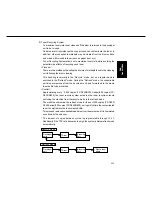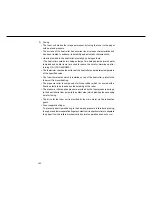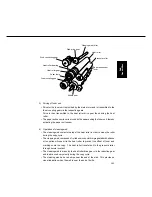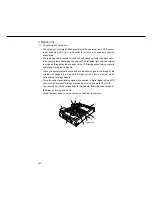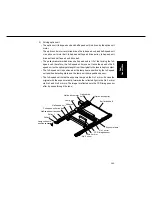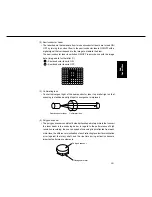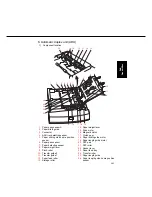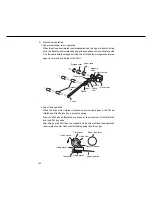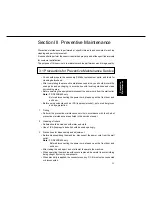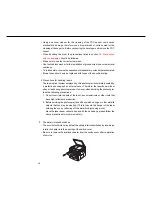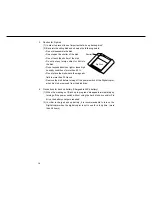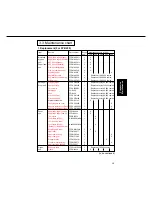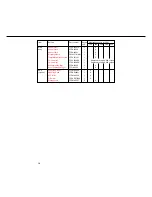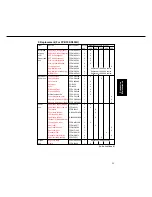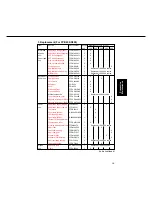
2-30
5)
Laser scanning unit (LSU)
(1) Outline
• Divergent light from the semiconductor laser (exposure) with light intensity
modulation by a digital image signal is converted into parallel light by a
collimating lens.
• The parallel laser beam falls on a rotary polyhedral mirror which is called a
polygon scanner.
The direction of the reflected light is curved since the optical path is folded
back by mirrors through f-
θ
lens, and image formation is realized on the drum
surface as several 42.3 micron light spots.
• The light spot scans lowered main scan direction in the figure while the image
is exposed on the drum as it rotates in the arrow direction (sub scan) to form a
latent electrostatic image.
• Part of the polarized laser beams fall on a synchronization sensor so that timing
for image recording start by the laser beams on the drum is synchronized.
Semiconductor laser 1
Collimating lens
Half mirror
Lens
Synchronization sensor
Mirror
Mirror
Main scan
direction
OPC Drum
Sub scan direction
Mirror
Mirror
Polygon mirror
Semiconductor
laser 2
Collimating lens




